This article was co-authored by Carlotta Butler, RN, MPH. Carlotta Butler is a Registered Nurse in Arizona. Carlotta is a member of the American Medical Writers Association. She received her Masters of Public Health from the Northern Illinois University in 2004 and her Masters in Nursing from the University of St. Francis in 2017.
wikiHow marks an article as reader-approved once it receives enough positive feedback. In this case, 80% of readers who voted found the article helpful, earning it our reader-approved status.
This article has been viewed 182,805 times.
Once a head lice infestation has been removed from your hair, it's important to clean clothing and other fabric items to ensure that the lice are truly out of your household. The easiest way to get lice out of your clothes is to machine wash them on a high heat and then put them in the dryer. If your clothes are not suitable for machine washing, there are some alternatives you can try.
Steps
Washing Clothes to Get Rid of Lice
-
1Gather the clothes. If you have lice, you will need to wash your clothes to help you make sure you and your house are rid of them. Before you do this you need to determine which clothes you need to wash. Gather together all the clothes that you wore or used over the past two days before you noticed and treated the lice.[1]
- You should include everything, including things such as scarves and hats.
- When you do this you should also gather all the towels, bedding and cloth toys that you have used in the two days.[2]
-
2Machine wash your clothes. Once you have gathered together all the clothes, you need to wash them at a high temperature in your machine. You should set the temperature to at least 130°F (54°C). Machine washing clothes at this temperature will kill the lice.[3]Advertisement
-
3Take the clothes to the dry cleaners. If you have clothes that cannot be machine washed you will need to try some alternative methods for killing the lice. You can take these items to the dry cleaners and have them washed there. This is a way to clean the clothes without damaging them, while still killing the lice.[6]
- This method could be used for woollen clothes that you don't want to shrink in a hot wash, or silk clothes that are too delicate for the washing machine.
- You should inform the person working at the dry cleaners about the lice so they can take extra care.
- You may be able to use a home dry cleaning kit if this involves you putting the clothes in the dryer on a high heat for at least fifteen minutes.
- As long as the clothes are exposed to a temperature of 130 degrees Fahrenheit for at least 5 to 6 minutes, the lice should be killed.
Trying Alternatives for Things That Cannot be Washed
-
1Use a dryer on a hot cycle. Using a dryer after washing your clothes helps ensure that all the lice are killed. But if your clothes are not suitable for machine washing, a spin in the dryer can kill the lice on its own. Place the clothes in a dryer, turn it onto a hot cycle, and leave the clothes in there for around 15 minutes.[7]
-
2Place them in a plastic bag for two weeks. Another way to deal with lice in your clothes is to place them in a sealed plastic bag and leave them for two weeks. Store them somewhere safe and ensure they are left for two full weeks before you return to them.[8] This is not the most practical method, can it can be useful if your clothes are especially delicate or cannot be washed in a normal way.
- For example, this method could be used for leather and suede clothes.
- This method can also be used for other non-machine washable fabrics, such as wool and silk.
-
3Clean around the house. The chances of becoming infested by lice that have fallen onto the carpet or a piece or furniture are relatively small, but taking some further steps to tackle lice that may have escaped your body and clothes helps limit the chances of an infestation. Vacuum the floor and furniture, paying particular attention to where the person with lice has been.[9]
- Wash bedding, towels and other cotton and linen material the person with lice has come into contact with.
- This step is more important for body lice, which generally live in clothing, than head lice.[10]
Expert Q&A
-
QuestionCan I get lice off of my clothes by freezing them?
 Carlotta Butler, RN, MPHCarlotta Butler is a Registered Nurse in Arizona. Carlotta is a member of the American Medical Writers Association. She received her Masters of Public Health from the Northern Illinois University in 2004 and her Masters in Nursing from the University of St. Francis in 2017.
Carlotta Butler, RN, MPHCarlotta Butler is a Registered Nurse in Arizona. Carlotta is a member of the American Medical Writers Association. She received her Masters of Public Health from the Northern Illinois University in 2004 and her Masters in Nursing from the University of St. Francis in 2017.
Registered Nurse Freezing is not typically recommended. However, freezing temperatures can kill head lice and nits. The process can last several days and depends upon the temperature. Temperatures greater than 103F kills head lice within 5-6 minutes of exposure to the temp.
Freezing is not typically recommended. However, freezing temperatures can kill head lice and nits. The process can last several days and depends upon the temperature. Temperatures greater than 103F kills head lice within 5-6 minutes of exposure to the temp.
Things You'll Need
- Washing machine
- Dryer
References
- ↑ http://www.cdc.gov/parasites/lice/head/treatment.html
- ↑ https://www.webmd.com/skin-problems-and-treatments/lice-treatment#3
- ↑ https://www.webmd.com/skin-problems-and-treatments/lice-treatment#3
- ↑ http://www.ncbi.nlm.nih.gov/pubmed/12890107
- ↑ http://www.cdc.gov/parasites/lice/head/treatment.html
- ↑ http://www.cdc.gov/parasites/lice/head/treatment.html
- ↑ http://www.ncbi.nlm.nih.gov/pubmed/12890107
- ↑ http://www.cdc.gov/parasites/lice/head/treatment.html
- ↑ http://www.cdc.gov/parasites/lice/head/treatment.html
About This Article
To get lice off clothes, first gather everything you’ve worn since you noticed the lice, as well things you wore 2 days beforehand. Then, machine wash everything on the hot setting or at least 130°F to kill the lice. Once the clothes have been washed, put them in the dryer on high heat. If you have anything that can’t be washed, such as silk or wool items, you can place them in a sealed plastic bag for 2 weeks to kill the lice. To learn how to use dry cleaning to get lice off clothes, read more from our Nurse co-author.







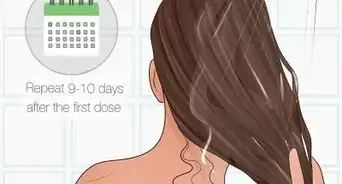

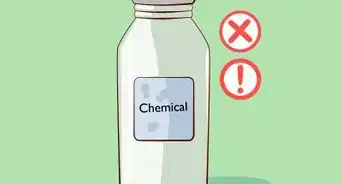
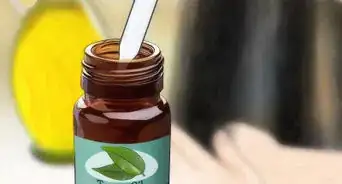

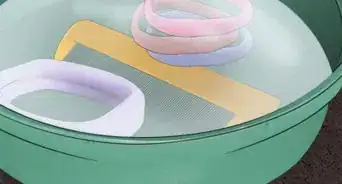
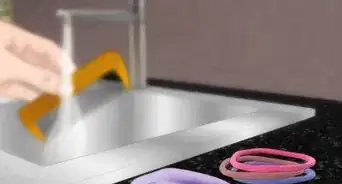
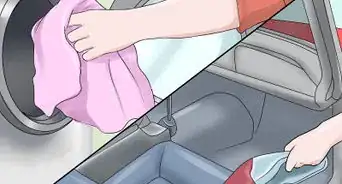
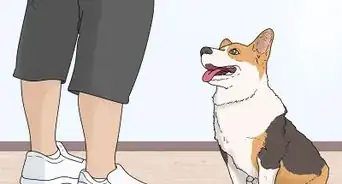










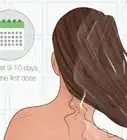

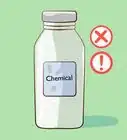



































Medical Disclaimer
The content of this article is not intended to be a substitute for professional medical advice, examination, diagnosis, or treatment. You should always contact your doctor or other qualified healthcare professional before starting, changing, or stopping any kind of health treatment.
Read More...